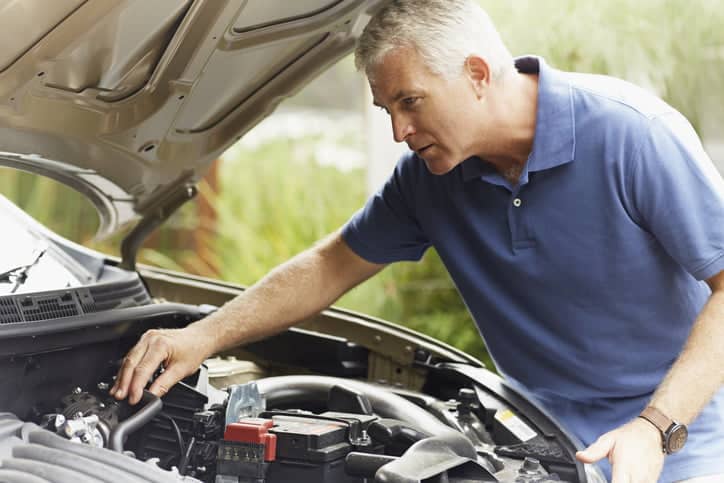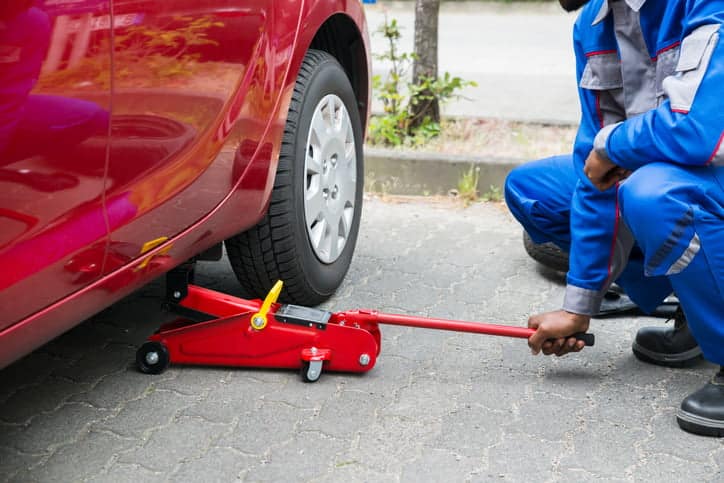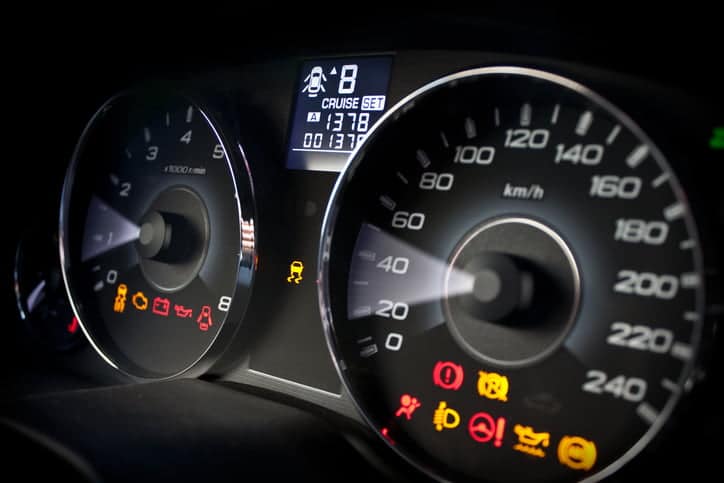Summer’s nearly over, which means colder weather and dark nights are right around the corner. But before autumn hits, you can get ahead of the weather by making sure your car is prepped and ready for the changing seasons.
 Read our guide on 16 car maintenance checks to do before the end of summer below.
Read our guide on 16 car maintenance checks to do before the end of summer below.
Quick Navigation
Under the Bonnet

- Oil Level and Condition
Check the level, colour and consistency of your car’s engine oil before the cold weather hits. Cold mornings mean your engine will have to work harder to get going, so lubrication is essential. If the level is low or it is really dark in colour, consider a filter and oil change in time for the colder months.
- Coolant/Antifreeze
Check the level of the coolant/antifreeze reservoir. If it’s down, top it up with high-quality coolant/antifreeze that’s the right ratio for winter driving (60% coolant/antifreeze to 40% water if using a concentrated product). You might also consider flushing the cooling system to replace the coolant/antifreeze with a tougher product before winter hits.
- Inspect the Battery
Look over your battery to make sure it’s in good condition. Dust and dirt from dry roads can build up around the terminals, so you might need to clean it down to guarantee a good connection. If you haven’t used your car much over the summer, it might not need charging too. Read our guide on car battery health for step-by-step tips and advice.
- Screen Wash Reservoir
Make sure your car is topped-up with good quality screen wash that can tackle whatever winter throws your way. If you use concentrated screen wash, you’ll want to adjust the ratio slightly for winter driving conditions; 60% screen wash and 40% water is about right.
Tyres, Wheels and Brakes

- Check the Tyre Pressure
Warm weather can increase the pressure in tyres, so you’ll want to check the PSI around every fortnight as we move into autumn to ensure they’re kept at the recommended pressure. Over or under inflation can reduce fuel economy and handling performance, and also increase the risk of blowouts.
- Check the Condition of the Tyres
Check how much tread you have left on your tyres. If you’re getting close to the limit, we’d recommend getting some new ones, as you’ll need maximum traction during the winter months. Also, check the sidewall and overall condition of the tyres, looking for any obvious signs of damage. Read our tyre maintenance guide for more practical tyre care tips and advice.
- Check the Rims and Alloys
Have you dinked a wheel on a curb or pothole this summer? You might want to get it repaired before the cold weather hits, as rust is more likely to set in when it’s cold and wet. Pitting marks can ruin the appearance of alloy wheels, so paying for a professional repair is a good investment.
- Prepare for The Worst
Tyre punctures are always annoying. But these days lots of cars don’t have spare tyres, so a flat tyre can leave you stranded. If you haven’t got one already, a can of Holts Tyreweld is a great thing to keep in your boot as winter comes around. It’s a safe and easy way to quickly reinflate your flat tyre so you can drive to safety.
Visual Checks of the Car’s Exterior

- Check the Lights
You might not have needed to use your lights much in the summer months, but that’s all about to change as we head into autumn. Check the headlights, taillights, brake lights and indicators, as well as your fog lights and daytime running lights. If you need a new bulb or there’s a loose connection, now’s the time to get it sorted before the nights start to draw in.
- Repair Scratches, Small Dints and Rust Spots
Stone chips and light scratches are common in summer when roads are drier. If your car has suffered a small nick over the past couple of months, it’s worth seeing if you can repair the scratch or dint yourself or having a professional take a look. Repairing it now will reduce the risk of rust in the colder, wetter months, which will eat away at the exposed metal and cause bigger problems down the road.
- Inspect the Undercarriage
If you can get under your car (our guide on how to jack a car can help with that), it’s well worth taking a look at the undercarriage for signs of wear and tear which might need repairing before winter. Things to look for include:
- Visible signs of wear, like rust
- Weak or fragile components that look like they’re about to fail
- A build-up of oil or fluid, which can signal a leak
- Heat damage from the exhaust pipe
- Give the Exhaust a Once-Over
While you’re under the car, take a look along the length of the exhaust system. You’re looking for small holes, cracks or areas of wear that could soon start causing problems. If you spot a small hole, don’t panic; Holts Gun Gum is designed to permanently fix holes and cracks in the exhaust system, so you won’t need to fork out for any pricey repair bills.
In the Cabin

- Make Sure There Are No Dashboard Warning Lights
If you’ve been ignoring a warning light on your car’s dash, now’s the time to get it sorted. Even if there aren’t any obvious symptoms, warning lights signal expensive problems waiting to happen – and the testing conditions of winter will only make things worse. If you’re not sure what a warning light means or you need help getting it sorted, read this guide from Redex on understanding dashboard warning lights.
- Check the Air Conditioning and Consider a Refresh and Recharge
Bad odours or a drop in performance can signal that your car’s a/c is ready for a service. If it’s not working as it should, take it to a mechanic who will recharge and clean out the system. If it’s still blowing cold but doesn’t smell too fresh, Holts Air Con Odour Bomb will take care of bad odours – so you can stay comfortably cool as we head into autumn.
- Check Winter Electricals
If your car has nice features like heated seats, heated windows or heated wing mirrors, they probably haven’t been used for a while – so it’s worth checking them before the cold weather sets in. Remember that components like this can put a lot of strain on the battery, so checking them now can help avoid problems down the line.
- Check the Window, Door and Sunroof Seals
Your windows and sunroof will have been opened and closed a lot over the summer, and this repeat use can sometimes cause wear and tear with the seals, leaving your car exposed to the elements. Check the seals for any signs of wear and tear that could lead to problems like flooding when winter hits. You can check the seals by aiming a hosepipe at the area to see if any water gets in.
So there you have it, our top tips for getting your car ready for the changing seasons. Visit our blog for more car maintenance guides and motoring advice, or head to the homepage for our full range of car maintenance and repair products.
